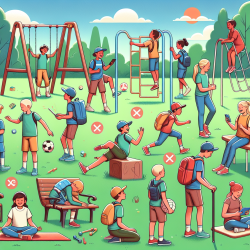Introduction
The rise of technology has brought about significant changes in our daily lives, especially for children and adolescents. With the widespread use of cell phones and backpacks, there is an increasing concern about the development of musculoskeletal symptoms due to maladaptive postures. A recent study titled Neck and Upper Extremity Musculoskeletal Symptoms Secondary to Maladaptive Postures Caused by Cell Phones and Backpacks in School-Aged Children and Adolescents sheds light on this issue.
Understanding the Problem
The study highlights the emergence of "text neck syndrome," a condition characterized by neck and shoulder discomfort, headaches, and even long-term complications like disk prolapse. This syndrome is primarily caused by prolonged periods of neck flexion while using cell phones, often exacerbated by the weight of backpacks. The research emphasizes that these postures can lead to significant anatomical and physiological changes, affecting children's long-term health.
Key Findings
- Children and adolescents spend about 5-7 hours daily in a forward neck posture, increasing the risk of musculoskeletal symptoms.
- Prolonged cell phone use is associated with increased neck pain, which is a predictor for chronic pain in adulthood.
- Both genders are affected, but studies show that females report higher prevalence of symptoms.
- Backpack weight can exacerbate postural issues, leading to further complications.
Prevention Strategies
Prevention is crucial in addressing these issues. The study suggests several guidelines to mitigate the risks:
- Encourage children to hold devices at eye level to prevent neck flexion.
- Promote regular physical activity to counteract sedentary behaviors associated with device use.
- Limit screen time according to age-appropriate guidelines, such as those from the Australian Department of Health.
- Educate parents and teachers about the importance of posture and the risks associated with prolonged device use.
Conclusion
As practitioners, it is essential to incorporate these findings into our practice to improve outcomes for children. By understanding the risks and implementing preventative measures, we can help mitigate the long-term health consequences associated with maladaptive postures. Further research is encouraged to explore additional interventions and to continue raising awareness about this growing issue.
To read the original research paper, please follow this link: Neck and Upper Extremity Musculoskeletal Symptoms Secondary to Maladaptive Postures Caused by Cell Phones and Backpacks in School-Aged Children and Adolescents.










